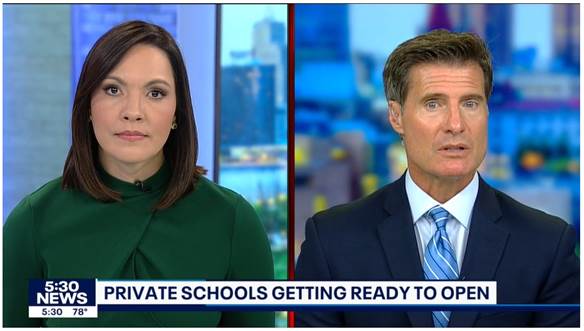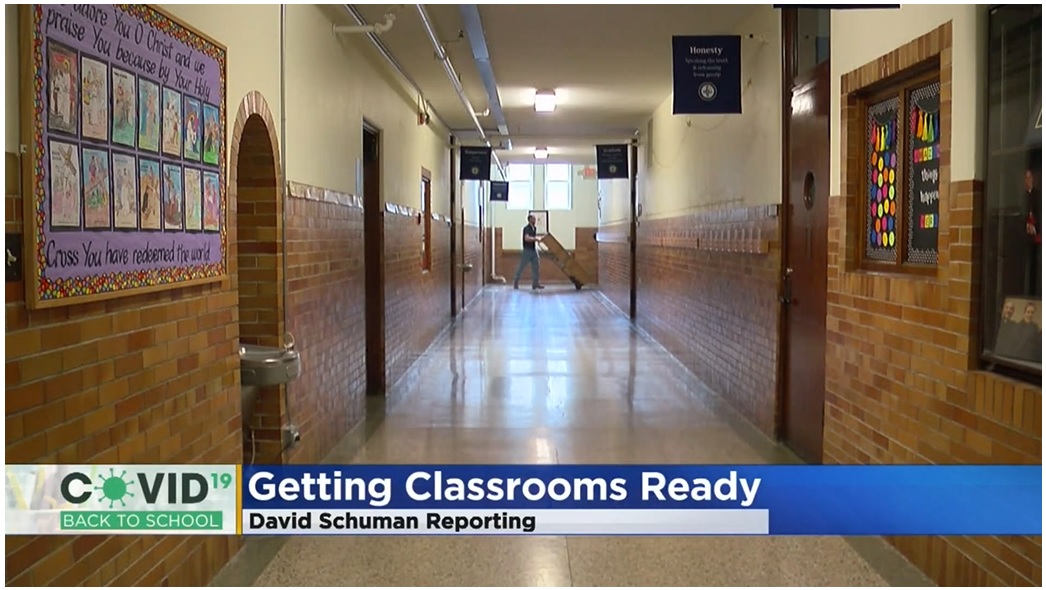The media company’s annual “Top States for Business” ranking scores a state’s education system as one of 10 categories to identify America’s best states for business. For 2025, Minnesota overall has dropped four places to 10th, as my colleague John Phelan wrote about here, but in the education category Minnesota increased from 17th in 2024 to 12th, tied with Pennsylvania.
According to CNBC, its education ranking considers “multiple measures of K-12 education including test scores, class size and spending,” along with higher ed components such as the number of colleges and universities in a state, historically black colleges and universities (HBCUs), and a state’s community college and career education system.
CNBC doesn’t share a detailed breakdown of each measure, so it’s hard to tell what specifically bumped up the state’s ranking — the state spending more now that it’s tied to inflation? Math scores ticking up two points even though reading declined? A previously top-ranked state dropping dramatically from its 2024 ranking?
Below are a few thoughts on some of what CNBC’s education ranking considers.
Test scores
While CNBC doesn’t name what test scores were reviewed, I’m going to assume it was results on the National Assessment of Educational Progress (NAEP), the only national assessment that can be used to compare student performance between states. As I wrote here, Minnesota’s 2024 average reading and math NAEP scores are not significantly different from 2022, when the tests were last administered — math ticked up two points, with reading declining one point among fourth-graders and holding steady among eighth-graders. Scores for both grades and subject areas are still below pre-COVID levels.
The percentages of students scoring below basic reading levels are at all-time highs, though — fourth graders scoring below the basic achievement level in reading stayed stuck at 39 percent, remaining the highest percentage ever since the NAEP reading test was first administered in 1992, and the percentage of eighth graders scoring below basic in reading ticked up to 29 percent, which is now the highest percentage ever for this grade level since the reading test was first administered in 1998.
Only using average test scores in rankings, though, ignores student heterogeneity and can end up skewing the rankings because it treats states as though they have identical students. This “ignore[s] the substantial variation present in student populations across states,” write Stan Liebowitz and Matthew Kelly for the Cato Institute.
When Minnesota’s NAEP scores are demographically adjusted, it moves the state from being in the top seven highest scores for fourth-grade math to the top 26; from the top 28 highest scores for fourth-grade reading to the top 39; from the top three highest scores for eighth-grade math to the top 15; from the top 14 highest scores for eighth-grade reading to the top 31.
Class sizes
Smaller class sizes in schools are typically seen as highly desirable, but research into the effects of class size has generally proved inconclusive — with some studies finding benefits and some not. Numbers that don’t often get mentioned in the class size debate: student-teacher ratios, the corresponding per-pupil expenditures, and academic results. The general thought is that lower student-teacher ratios mean higher academic achievement. But that’s not always the case. How money is spent matters far greater than how much is spent.
Spending
Which leads into another measure CNBC’s education ranking considers — spending. Minnesota spends around $16,900 per student, landing it relatively in the middle compared to other states’ spending. A fair number spend more, and a good number spend less.
But including spending in calculating rankings risks “giv[ing] extra credit to states that spend excessively to achieve the same level of success others achieve with fewer resources, when that wasteful extra spending should instead be penalized in the rankings,” write Liebowitz and Kelly. For example, 13 states outperform Minnesota on fourth-grade reading and spend less per student.
Is our state’s education system still doing better than others? Yes. Is there room for improvement before the state has full bragging rights? Most definitely.











![[downloaded during free trial]](https://oakmn.org/wp-content/uploads/2025/11/iStock-1430368205-120x86.jpg)

